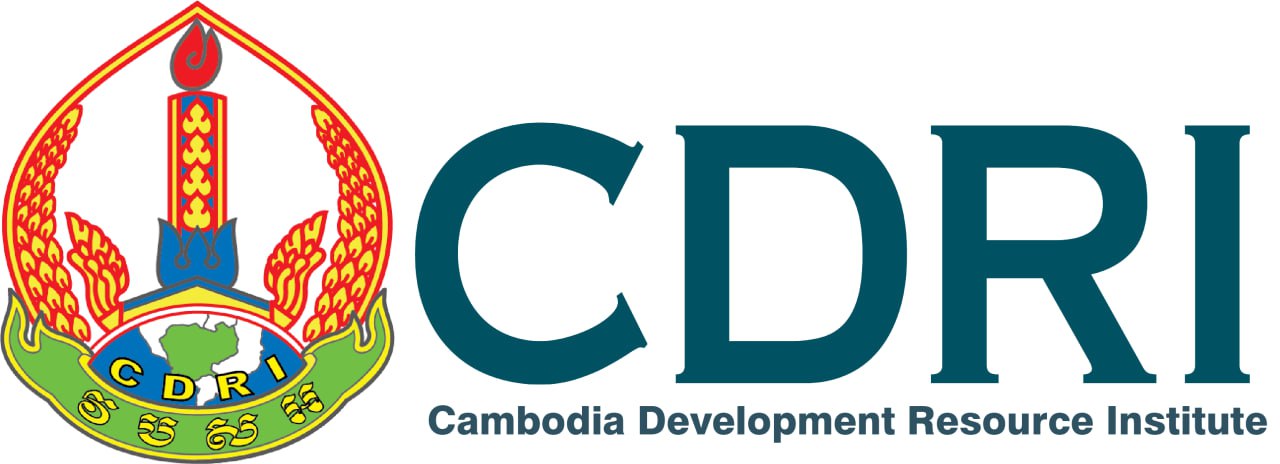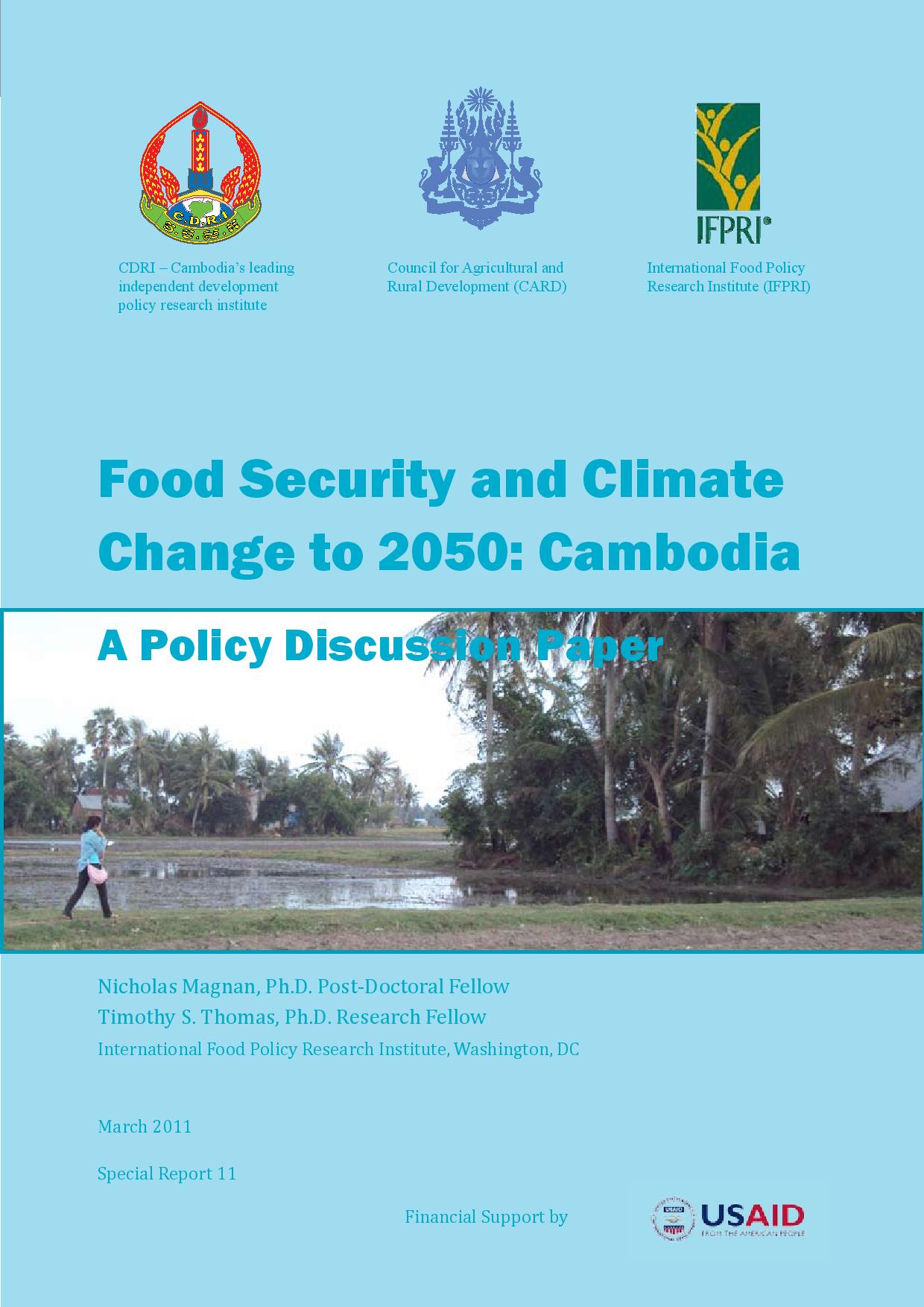
Food Security and Climate Change to 2050: Cambodia
In Cambodia, two thirds of the population are economically dependent on agriculture and most farmers are poorly equipped to adapt to climate change. Because of international linkages through trade and prices, any complete analysis of the potential domestic effects of climate change must consider impacts on a global scale. This paper highlights a se...
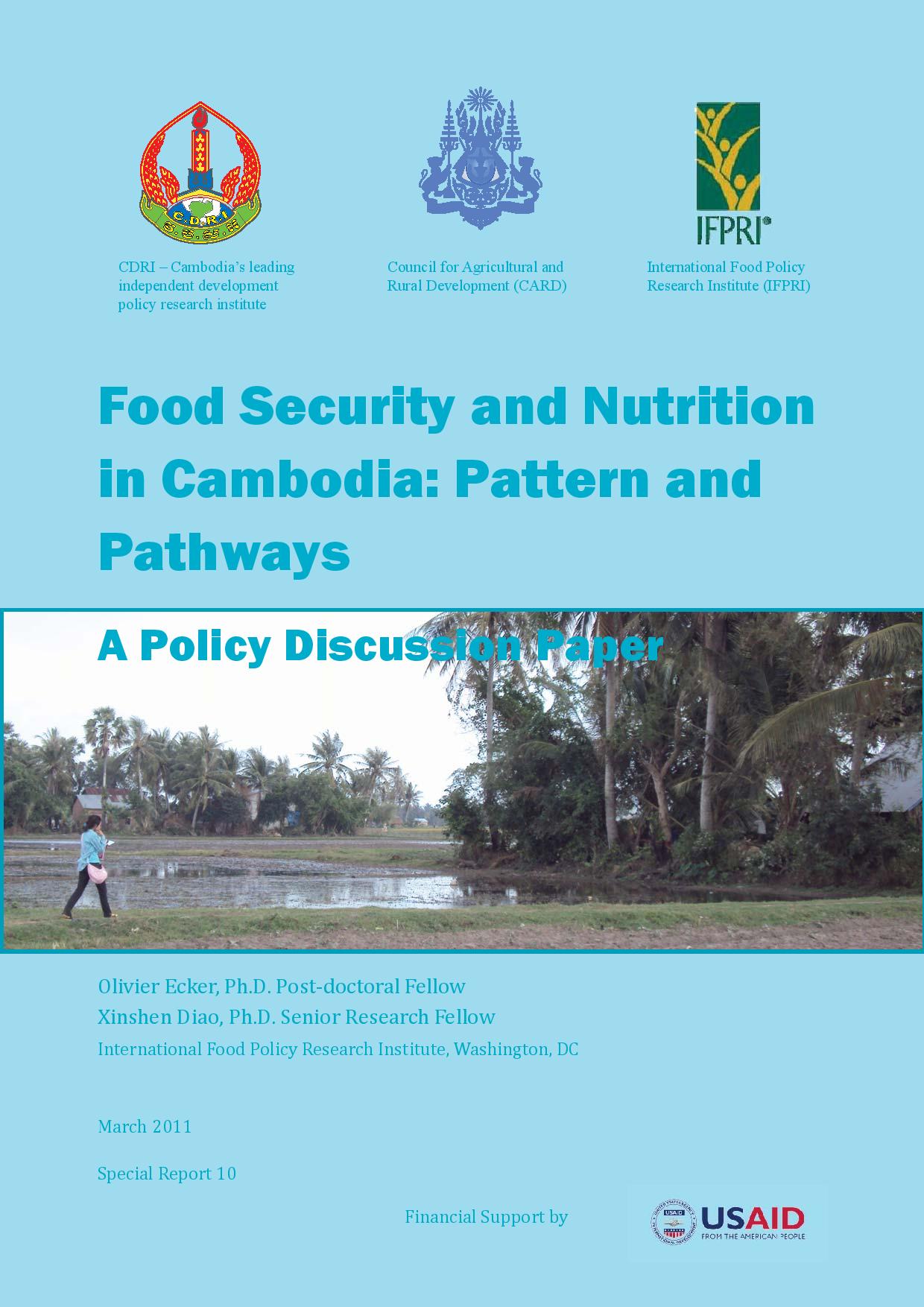
Food Security and Nutrition in Cambodia: Patterns and Pathways
Through comparison with other countries in Asia, this paper analyses the patterns of hunger and malnutrition in Cambodia and possible pathways to ensure the country’s future food security. In the face of increased inequality and high population growth, Cambodia has managed to make considerable progress in reducing hunger and malnutrition especially...
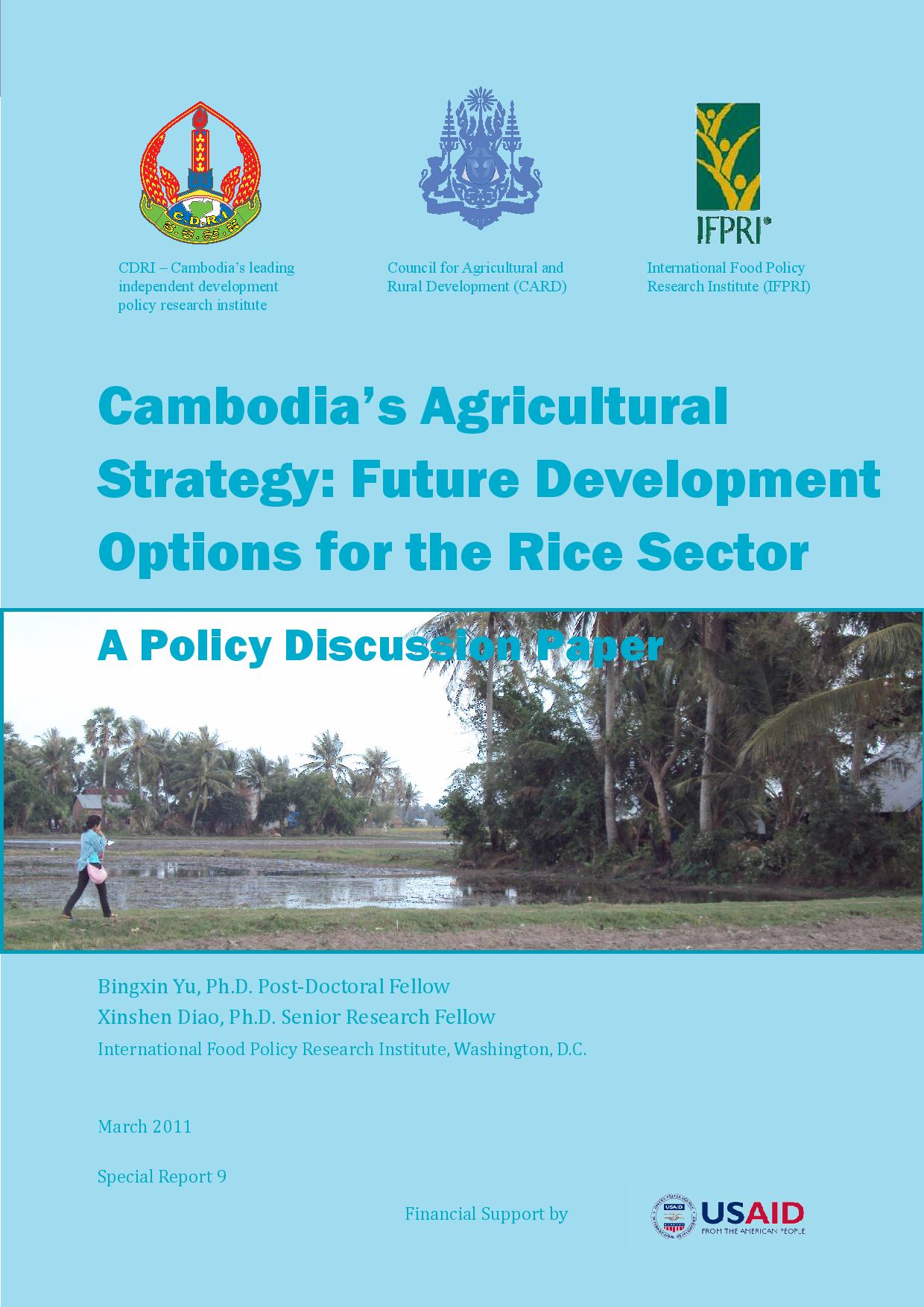
Cambodia’s Agricultural Strategy: Future Development Options for the Rice Sector
This paper first reviews the performance of the rice sector and rice-related government policies and interventions and then explores a possible development path for rice by comparing the current situation in Cambodia with the early development stages of Thailand and Vietnam. With strong government support, rice production has grown rapidly since 20...

Natural Resource Governance and Food Security in Cambodia
Cambodia experienced a decade of rapid economic growth until 2007, but that growth depended significantly on exploiting its natural resource base and was marked by an unusually rapid rise in inequality. While investments in health, education, rural infrastructure and microcredit are essential to improving the asset portfolio of vulnerable hou...
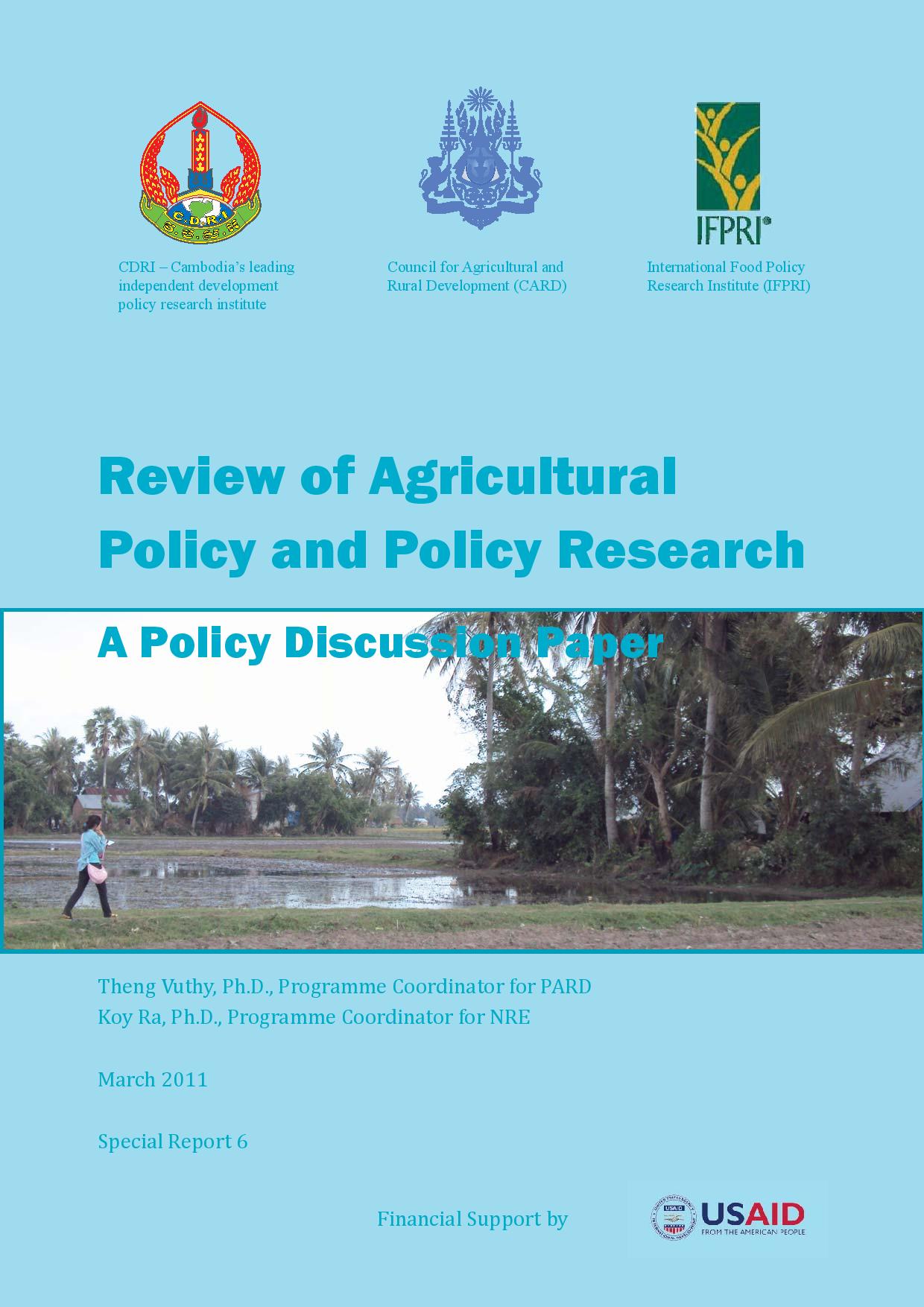
Review of Agricultural Policy and Policy Research
The Cambodian government articulates its agriculture policy in the Rectangular Strategy: “To improve agricultural productivity and diversification, thereby enabling the agriculture sector to serve as the dynamic driving force for economic growth and poverty reduction.” To this end, it developed the National Strategy for Agriculture and Water, which...
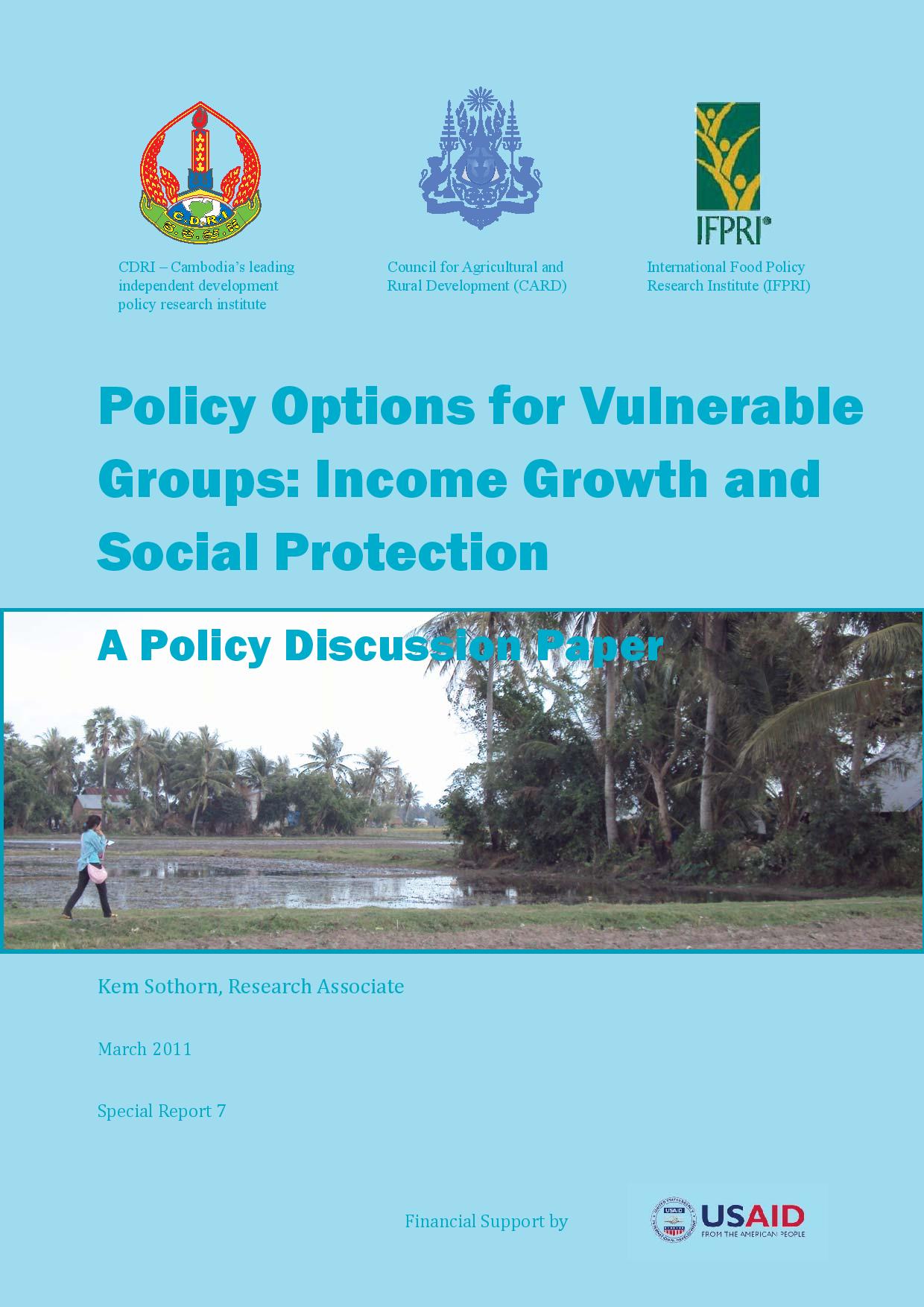
Policy Options for Vulnerable Groups: Income Growth and Social Protection
Two decades of civil war caused extensive damage to Cambodia’s physical, social and human capital and left the populace, especially rural people, in a state of chronic poverty and vulnerability. Despite pro-poor targeting and massive efforts by the government and its development partners, a large proportion of the population in need of support does...

Scoping Study: Research Capacities of Cambodia’s Universities
This study tries to map the current state of research in selected Cambodian universities, with special focus on research capacities – the factors that facilitate (or hinder) research, especially applied research with a direct relevance to Cambodia’s development challenges. It seeks also to identify opportunities to seed development research through...
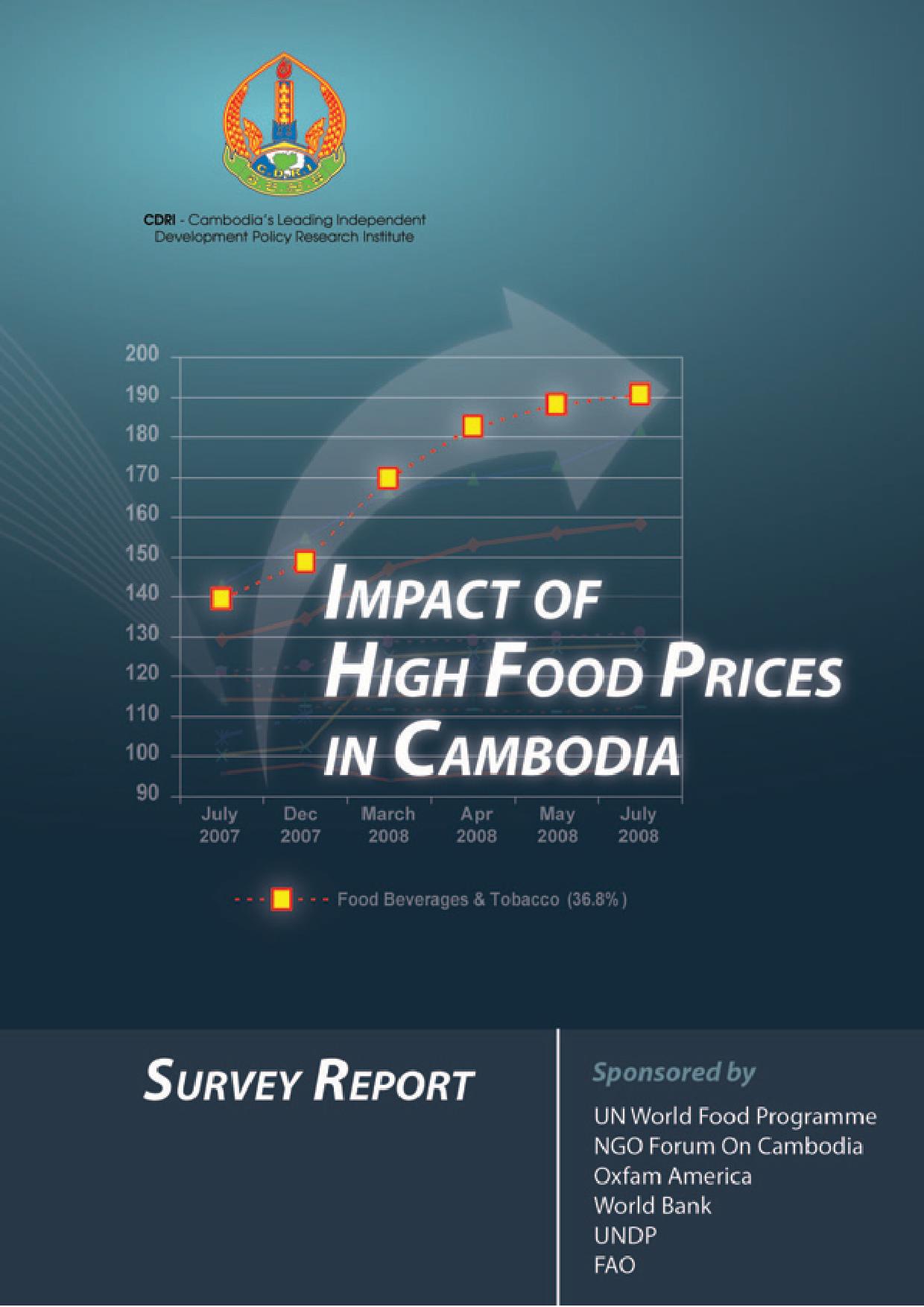
Impact of High Food Prices in Cambodia
The rising fuel and food prices Cambodia experienced in 2008 pushed year on year inflation above 20 percent in March – August. Although high food prices negatively affect everyone, they impact more severely on the poor, especially net food buyers. In Cambodia, the poorest 40 percent of the population spend 70 percent of their income on food. Most o...

The Early Harvest Programme: Implications for Cambodian Agriculture
This study examines the development, features and implications of the ASEAN-China Free Trade Area (FTA) on regional economies. It focuses on the economic benefits of the ASEAN-China FTA from the perspective of Cambodia, the potential impacts of the Early Harvest Program (EHP) on its agricultural sector, and recommended policy responses for Cambodia...
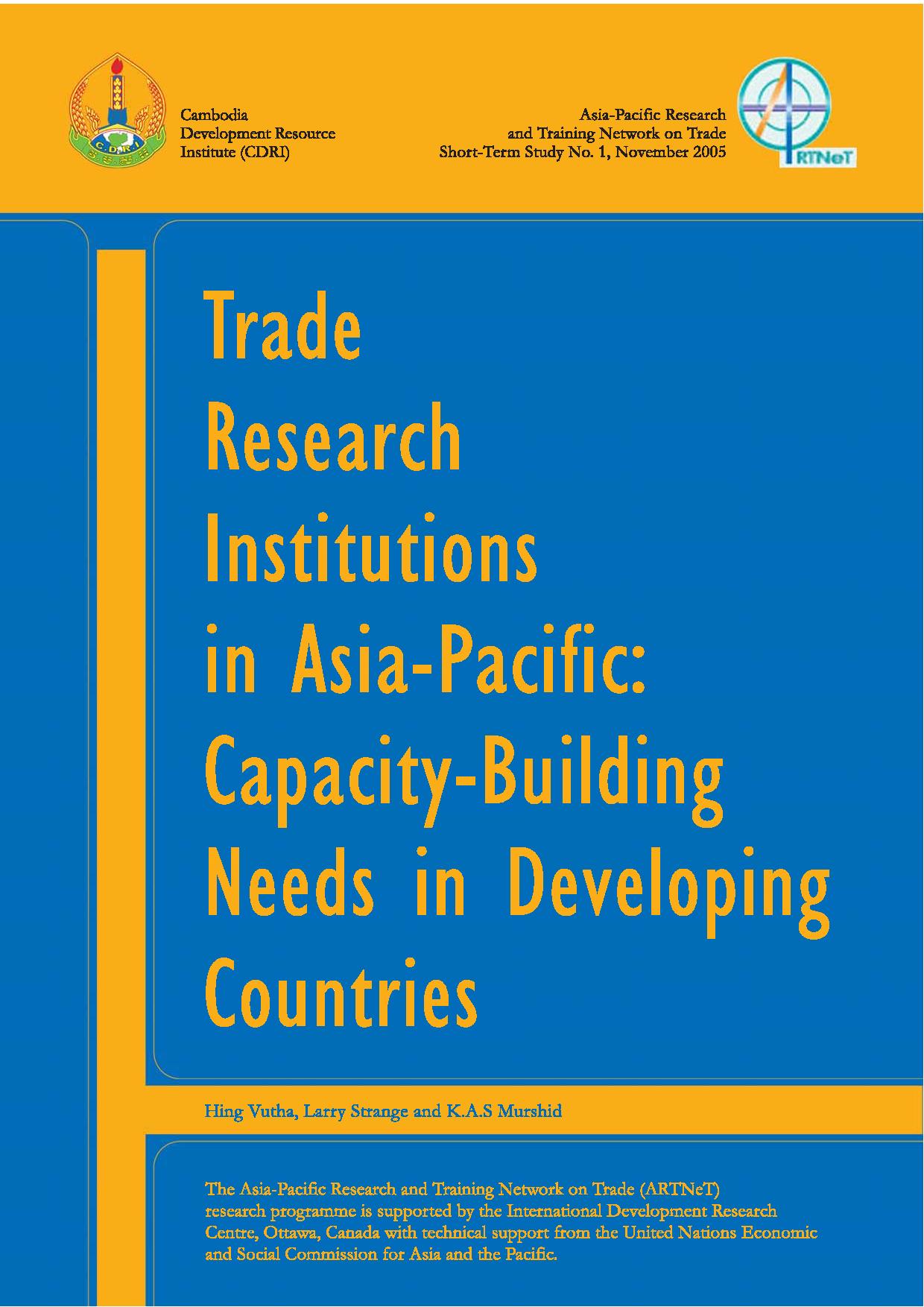
Trade Research Institutions in Asia-Pacific: Capacity-Building Needs in Developing Countries
The informal meeting of core Asia-Pacific Research and Training Network on Trade (ARTNeT) research institutions in 2004 highlighted the need for building the capacity of research institutions from least developed countries (LDCs) in the region. However, little research or information is available on what the needs of these research institutions are...
